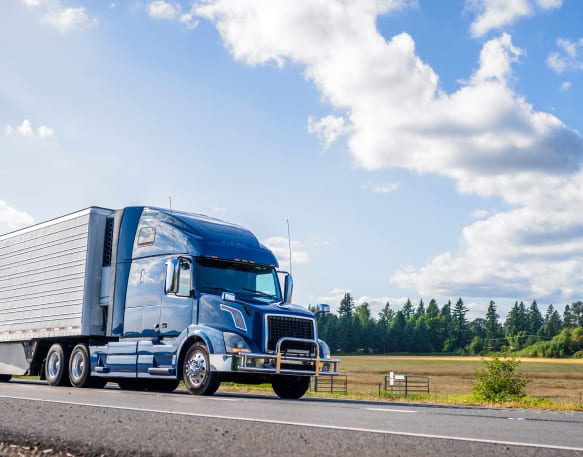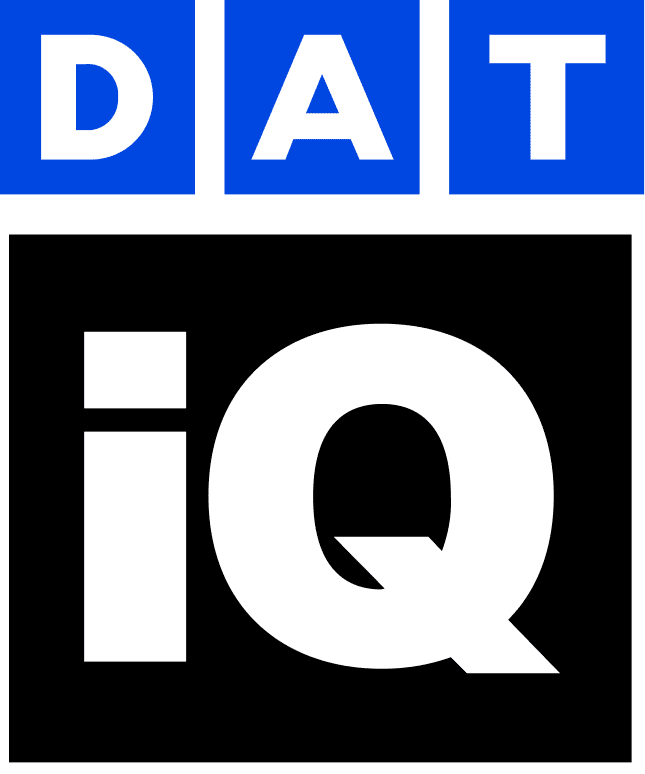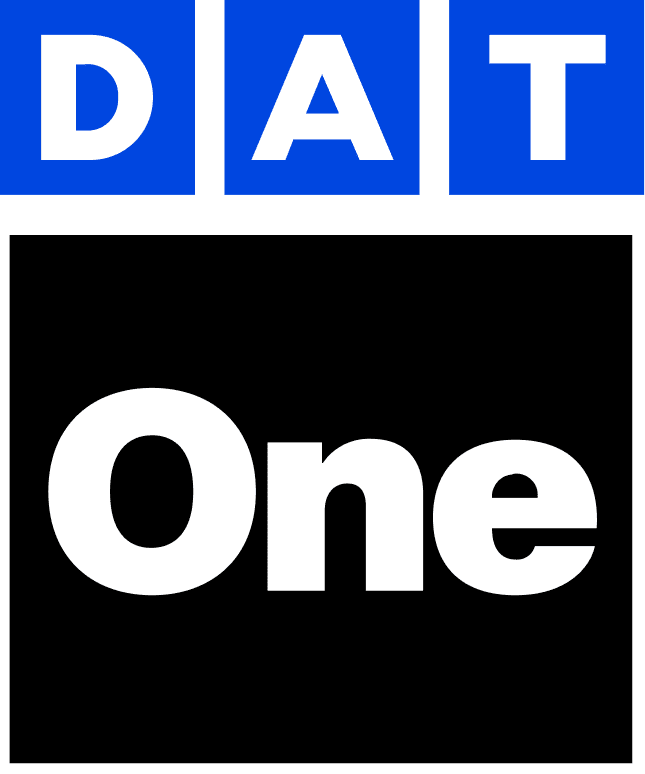
Switching your TMS: Why DAT Broker TMS is the smart choice for brokers
You’ve spent time and money on implementing a new TMS system, only for it to cause more inefficiencies than before. Or, maybe you’ve already had a TMS system, but it can’t keep up with today’s fast-paced logistical environment. If that’s the case, it’s time for a TMS upgrade.
Swap your current TMS for a better one
As a freight broker, managing logistics between carriers and shippers can get complicated, especially in today’s (largely digital) world. Between negotiating rates, tracking shipments, organizing and inputting documentation, and maintaining regulatory compliance, hefty manual workloads make it difficult for brokers to help keep supply chains running smoothly. To alleviate this pressure and optimize operations, many brokers turn to transportation management systems (TMS).
However, the best transportation management software should lessen your workload, not add to it. If your current TMS feels outdated, has increased costs over time, or has led to many unsatisfied customers, it’s time to switch TMS software. Read on to learn how to evaluate when it’s time to upgrade your TMS and why DAT Broker TMS is the optimal choice.
Signs it’s time to switch your TMS
Sometimes it can be difficult to determine whether your TMS is underperforming. What you might think is a small issue could be a recurring problem that’s normally addressed by other top TMSs. Over time, this can lead to more problems and delays in operations, resulting in workflow processes that aren’t as productive and efficient as they should be.
Here are some telltale signs that it’s time for a TMS upgrade:
- Outdated technology: If your TMS lacks modern features like real-time tracking or integrated analytics, it means your business is already working behind the pace of other broker businesses.
- Integration issues: The best TMS software is easily compatible with your existing load board, accounting, and document management tools. If you’re constantly switching between tabs or having trouble keeping data all in one place, you’re probably spending time on redundant tasks that are slowing your business down.
- Limited scalability: Top TMS software can grow alongside your business, allowing your workflows to adapt seamlessly to increased demand. A TMS that’s limited in scalability will also limit your business’s growth.
- High costs and downtime: While investing in a top TMS may cost more upfront, having an outdated system can actually cost you more in the long run due to frequent crashes or maintenance costs.
Steps to switch your TMS system
After deciding to take the leap and upgrade to better transportation management software, it’s time to prep your organization for this change to ensure a smooth transition. Before you make a commitment, consider these steps:
- Assess your current system: Identify the pain points, limitations, and inefficiencies of your existing TMS. Does paperwork make up the majority of your workload? Do you find yourself wasting time with repetitive tasks? Are there any visibility gaps in your tracking tools? Whatever challenges you’re currently facing, take note of how a new TMS can address them.
- Define business goals: Establish clear objectives for what you want to achieve with your new TMS, whether it’s better integration, visibility, or automation. Perhaps you’re looking to increase shipment capacity without adding more staff or want to automate routine tasks to reduce errors. Either way, having a well-defined vision helps you align the TMS software’s capabilities with your growth strategy.
- Research TMS options: Take some time to vet the TMS options on the market. Consider what each one offers in terms of features, scalability, and cost and whether or not there are tools that can be tailored to brokers.
- Involve key stakeholders: When choosing a new TMS, ensure collaboration across departments like operations, accounting, and customer service. Each team interacts with logistics systems in different ways, so their input can ensure that the new TMS meets everyone’s needs. This way, you reduce the risk of disruption and facilitate smoother adoption all around.
- Plan for data migration: Logistics is all about data. When adopting a new TMS, you’ll most likely need to move existing data, documents, and workflows from your old system to the new one. The best way to do this is by implementing this shift in phases to avoid operational downtime. For example, you could begin with critical functions like load management and carrier monitoring, and branch out until all facets of your broker business rely on the new system.
- Train your team: Provide full training for everyone expected to be hands-on with your new TMS. Ensure that they understand how to use it for everyday tasks such as managing shipments, tracking inventory, and updating records. This training should cover both basic operations and more advanced features that could improve productivity.
- Monitor and optimize the new TMS: After the switch is complete, make sure that the TMS is functioning properly. Continuously run audits to check its performance and adjust any features that can improve efficiency.
It can be tempting to do a complete TMS overhaul overnight, but taking these steps can help you facilitate a more thoughtful and seamless transition that you and your team can feel confident about.
Key features to look for in a new TMS
When adopting a new TMS, prioritize features that will drive long-term success for your business.
First, seamless integration is paramount—the best TMS software should easily connect with load boards, accounting systems, and other existing tools to streamline processes and avoid operational bottlenecks. It should also be scalable and able to handle increased freight volumes as well as more complex processes.
A TMS platform can have all the bells and whistles, but it won’t work effectively if your team can’t navigate it. A user-friendly interface is a necessity. The system should be intuitive and easy to use to reduce the need for additional training. It should also come with advanced visibility and analytics to help you and your team track key metrics, gain real-time insights into operations, and make informed decisions about managing costs and improving overall efficiency. With these capabilities, a well-chosen TMS becomes a strategic asset, empowering your team to respond proactively to challenges and drive sustainable growth for your business.
Why DAT Broker TMS is the best choice
DAT Broker TMS is designed to boost your brokerage’s productivity and profitability with fewer resources. Think of it as the central hub of your business—everything runs through it. From accounting to operations, Broker TMS consolidates all your platforms into one seamless interface, giving you instant access to the tools and information you rely on daily.
With Broker TMS, you can also obtain real-time updates on carriers and shippers, verify new clientele in mere minutes, and say goodbye to redundant data entry. Its advanced data exchange tools make communication effortless by syncing shipper and customer information automatically. One user even said, “The product itself keeps us organized. It’s a center point and focus for us to lean into.”
Broker TMS doesn’t stop at streamlining your operations. Its comprehensive accounting system simplifies managing invoices, provides full financial visibility, and enables quick audits with detailed reporting. Users love how easy it is to send automated emails to customers with just a few clicks, ensuring invoices are processed quickly. One broker noted, “Having Keypoint, we’ve actually taken our days to pay down by ten days. Carriers are being paid so quickly, and that’s because of the functionality it offers.”
It’s the best transportation management software if you’re aiming for an all-in-one system that works like an ally and offers minimal disruption as you switch TMS software.
Future-proof your TMS
As the best TMS software out there, DAT Broker TMS doesn’t just solve today’s problems—it prepares you for tomorrow’s. As your business grows, you can add more capabilities like:
- CRM Sales modules for managing leads and keeping communication lines responsive.
- Document management to help digitize and store increasing loads of paperwork.
- Load tracking for more precise eyes on transported goods.
- Rating modules to scan for performance comparisons and highly qualified carriers.
- Priority booking features to better manage time-sensitive loads.
With Broker TMS, there’s no need to switch platforms every time the industry faces new challenges. We’ve factored in room for adaptability, so you can stick with the same reliable TMS for years to come.
Minimize the mess, maximize your productivity
Switching to a new TMS can streamline your operations and position your business for sustainable growth. By recognizing signs of inefficiency in your current system, defining your business goals, and carefully evaluating new TMS options, you can select a solution that aligns with your needs..
Solutions like DAT Broker TMS offer the robust features brokers need, helping ensure that your investment leads to greater productivity, efficiency, and long-term success. In today’s fast-paced logistics landscape, having a reliable, well-integrated TMS enables brokers to focus on what matters most: delivering value to clients and growing their business.
Share
Related Articles
FAQs
A few things you might be asking yourself
A transportation management system (TMS) is a software system that helps brokers, shippers, and carriers manage and optimize the movement of goods as they are transported to their destination. TMS tools offer clear visibility into all facets of transportation operations and help automate repetitive tasks for easier management.
A TMS for freight brokers is not necessary, but it’s highly recommended. The best TMS software often benefits brokers by:
- Automating load matching, route planning, and other management processes
- Providing real-time visibility into shipper and carrier operations
- Scaling operations to meet growing business demands
- Managing compliance documentation
- Improving customer service communications
With a high-quality TMS, brokers gain better visibility and efficiency when managing logistics between carriers and shippers.
A TMS provider is a company that provides software solutions designed to help shippers, freight brokers, and carriers manage and optimize transportation logistics. These solutions can either be cloud-based and accessible from anywhere, or reserved for on-premises use.
However, not all TMS providers offer the same management features. To choose the best transportation management software, look for these capabilities:
- In-depth data analysis and insights
- Assistance with carrier selection and qualification
- Built-in carrier qualification system
- Freight tracking tools
- Customer invoice and transaction support
- Compatibility with different payment methods
- Easy integration with existing tools and software programs
For an all-in-one TMS that makes logistics easier for freight brokers, try Broker TMS from DAT One. Combine all your existing operational processing into a single platform to simplify management. You can also search your carrier database, directly post on load boards, make the most out of integrated analytics, and enjoy optimized task flows—whether that’s accelerating financial transactions or verifying carriers.
The cost of a TMS largely depends on the size of your business, whether it will reside in a cloud or on-premises, and how complex your internal processes are. Also, some platforms offer a subscription-based payment model while others require an upfront payment.
For cloud-based TMS tools, prices can range anywhere between $500-$15,000 per month, while on-premise TMS have upfront licensing costs ranging between $100,000 to over $500,000. Keep in mind that there may be additional fees on top of this, including those for implementation, customization, training, and professional services.
Get the best TMS software with DAT Broker TMS
Need a TMS upgrade? DAT Broker TMS has you covered with holistic insights, detailed analytics, and a consolidated platform to optimize your business operations the way they should be.
See the difference for yourself—request a demo today!





